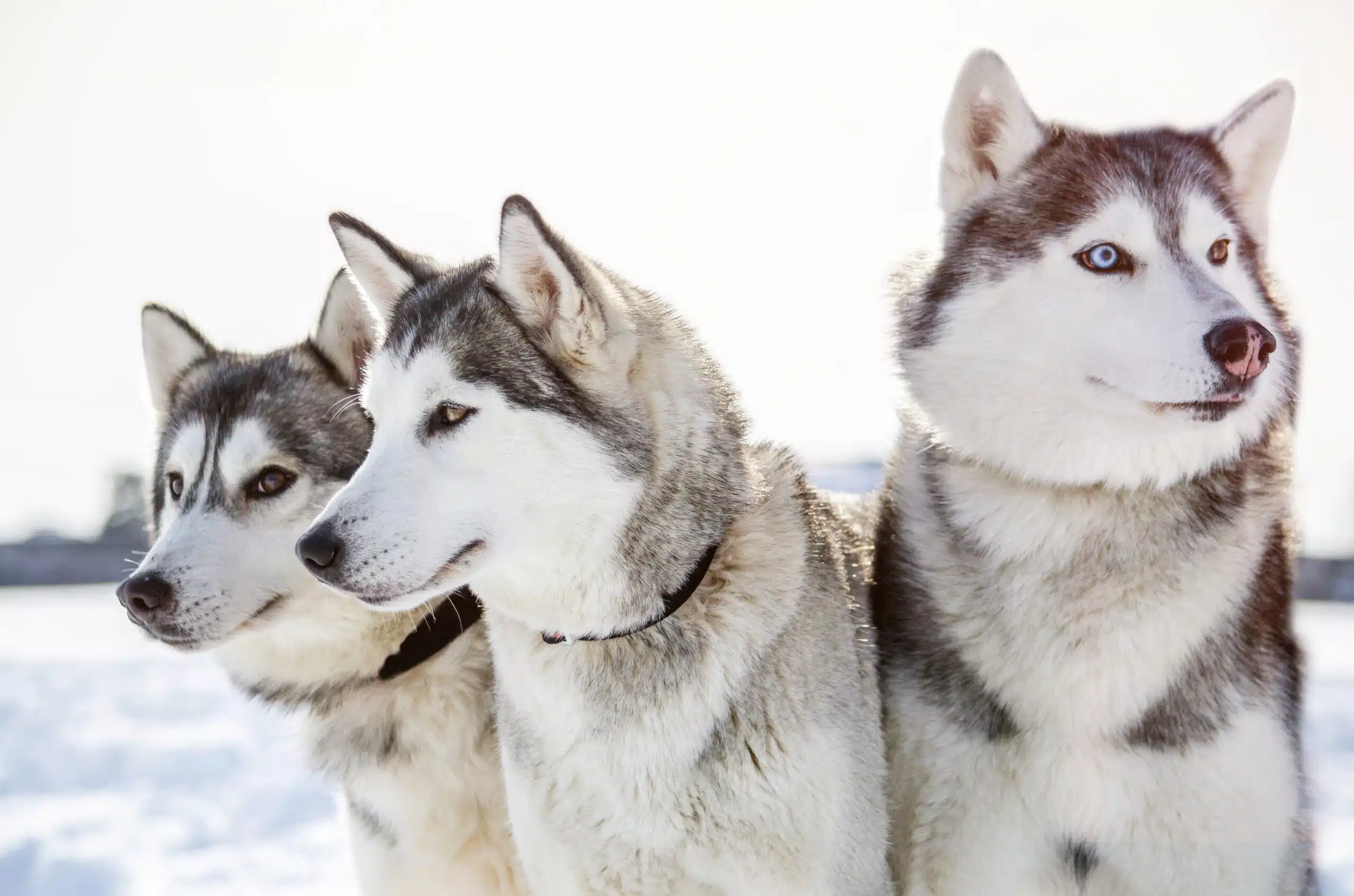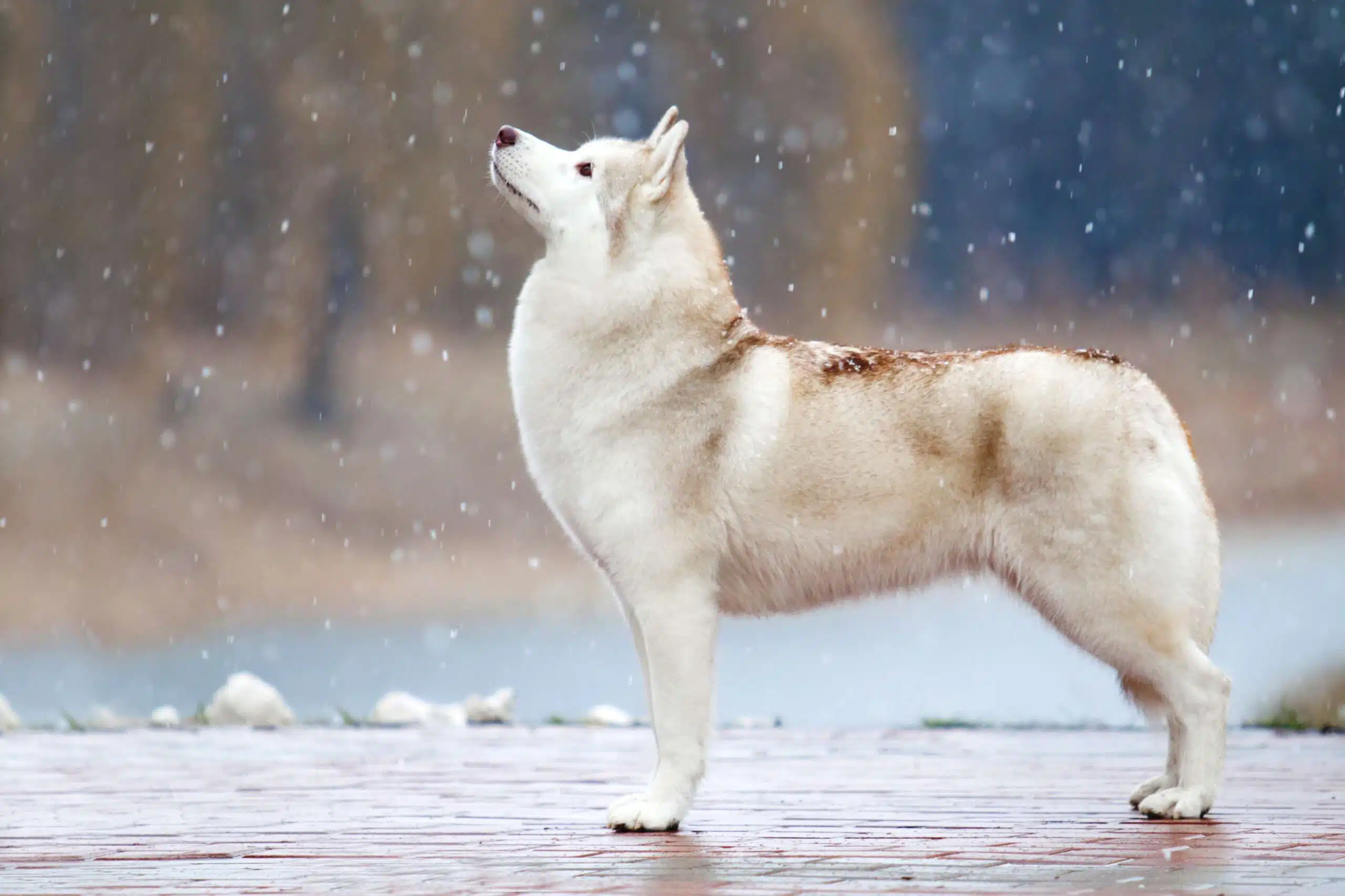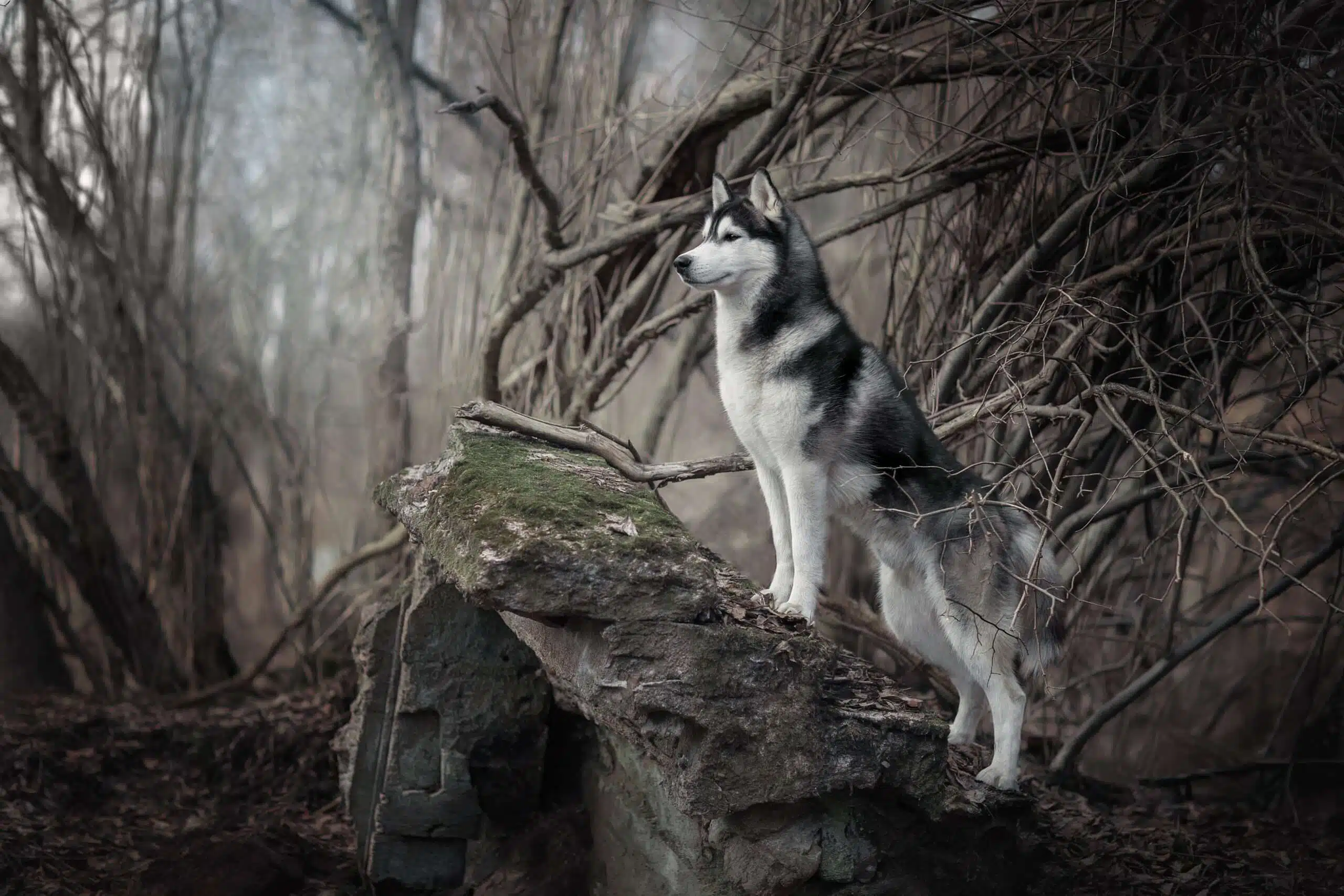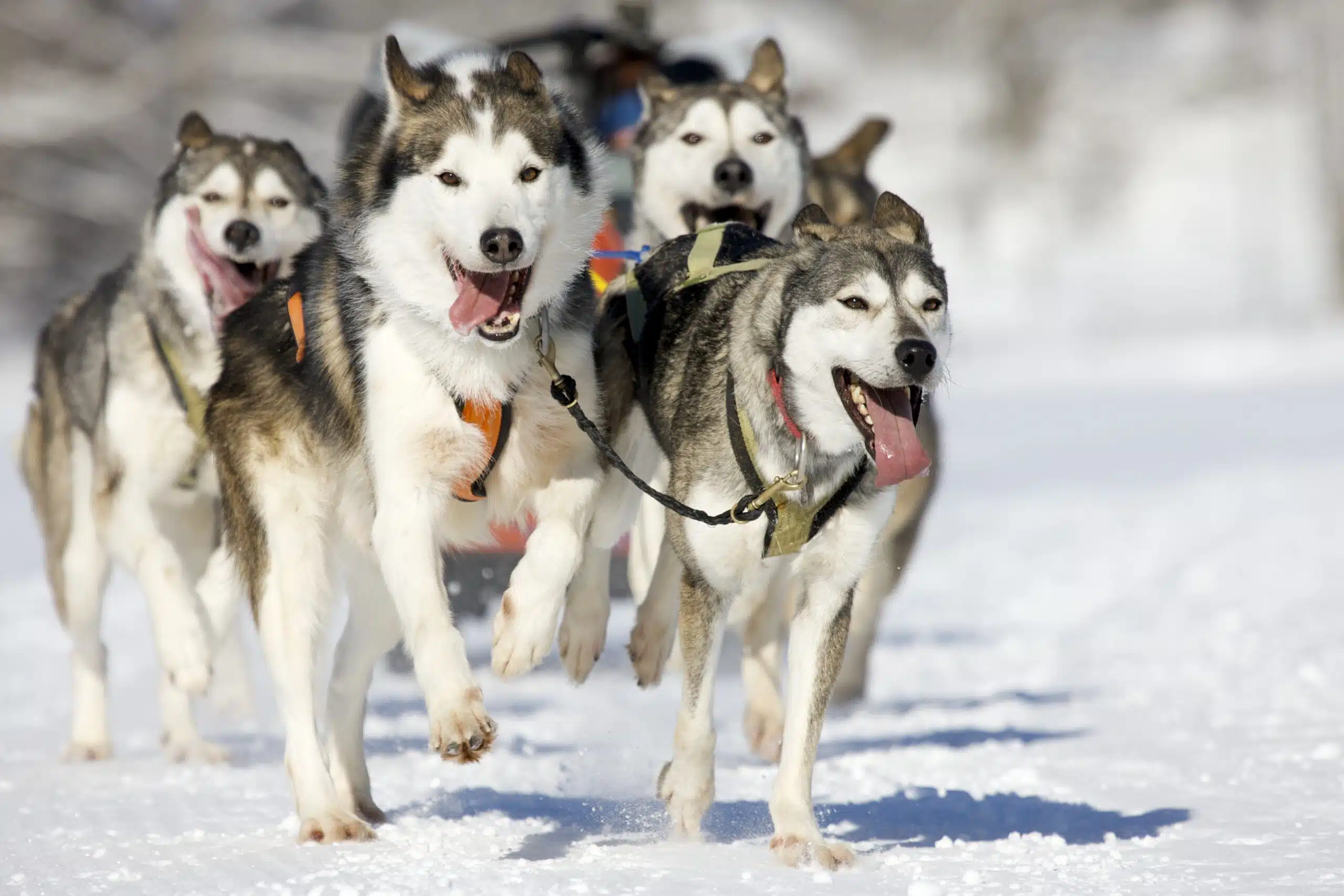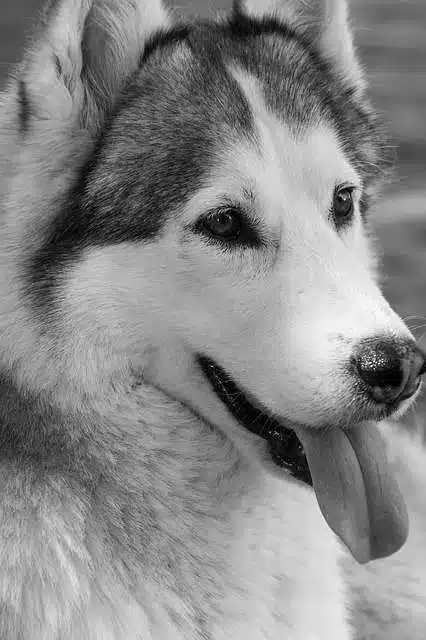Siberian Husky
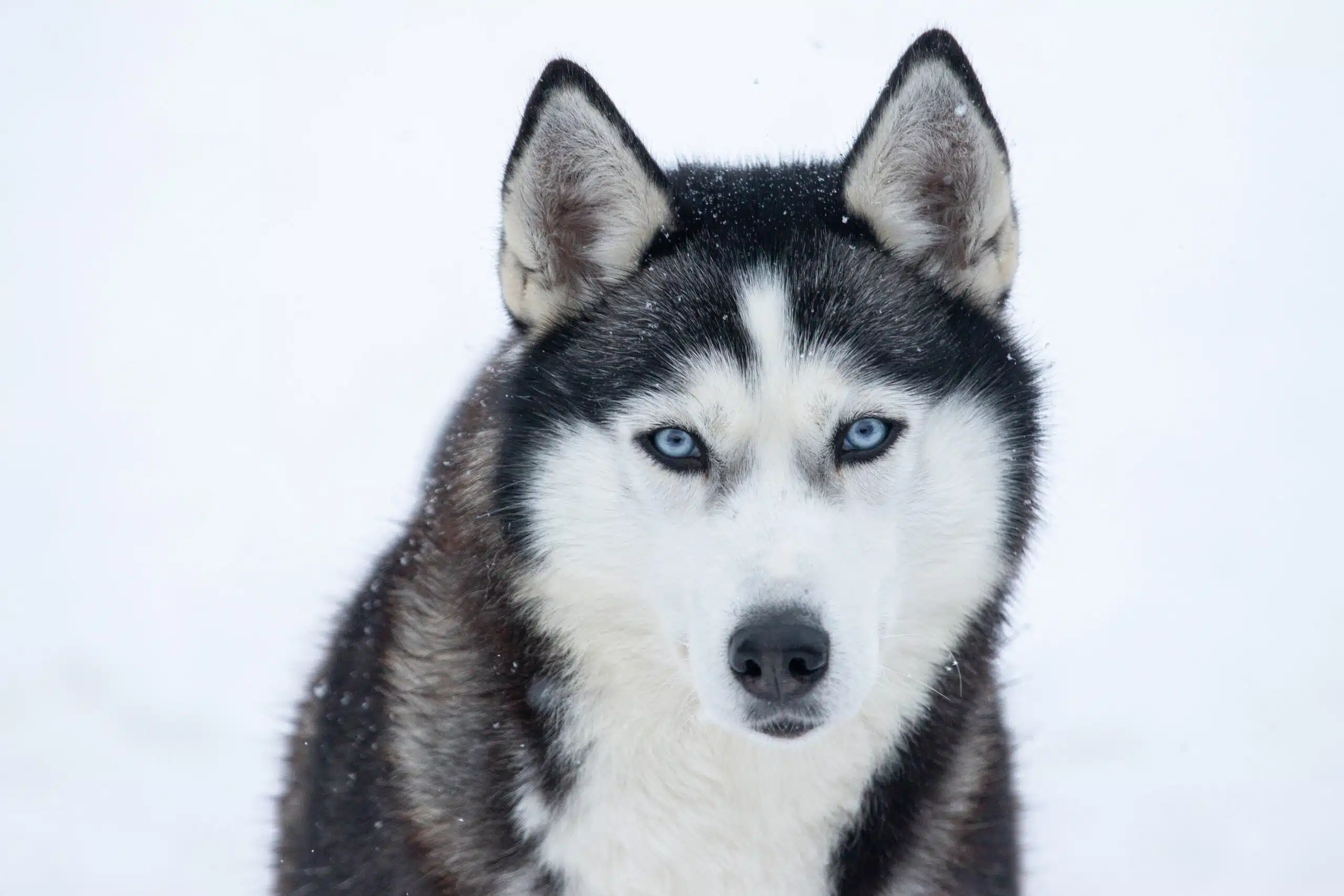
For centuries, the Siberian Husky has been an integral part of survival for the Chukchi Indians in Soviet Arctic. Even today, these medium sized pups are used as sled dogs and still make superb companions to active households due to their ample energy and need for vigorous exercise. In addition, they possess an abundance of intelligence and gentle friendliness that makes them lovable pets!
The Siberian Husky became renowned in 1925 after demonstrating its strength and speed during the highly demanding All-Alaska Sweepstakes race from Nome to Candle and back. These dogs are one of the lightest yet swiftest sled dog breeds, making them an ideal companion pet. However, unfortunately they’re frequently misunderstood because their need for extensive exercise often clashes with people’s busy lifestyles.
If you’re in the market for a relaxed pup that can peacefully lounge with you at night and take light strolls around your neighborhood, then the Siberian Husky is not suitable. Nor would it be an ideal choice for those seeking an obedient companion to dutifully follow their commands.
For those seeking a canine companion and friend, one who will adore their children, welcome visitors warmly and get along with other canines – especially for those prepared to provide reliable direction as well as regular exercise on a daily basis – then getting a Siberian Husky will be an absolute pleasure.
Although Siberian Huskies are generally amicable with their canine counterparts, they also possess a strong predatory streak and may view smaller pets such as cats as prey. Those who cohabitate with multiple species must take extreme caution when dealing this breed of dog.
As one would anticipate from a breed created for snowy climates, the Siberian sheds all year round but primarily in spring and fall. On the plus side, his short yet dense coat is simple to maintain and regular brushing will help decrease shedding.
Siberian huskies generally refrain from barking and may howl in the presence of a siren. But be warned, these furry friends are well-known for their acrobatic talent; they have been known to climb over or dig beneath formidable fences. Although neutering your Siberian can reduce its tendency to wander off, it is not foolproof – therefore microchipping them and placing an identification tag on its collar is strongly recommended if you wish to help ensure that your beloved pet will safely return after any escapades!
A Siberian may appear content living in a kennel environment, as they often receive ample exercise; however, leaving them alone in the backyard is not recommended. Not only will this lead to feelings of loneliness and boredom but can also result in destructive behaviors such as digging and jumping fences or going off on long adventures. Siberians are well-known for their incredible digging abilities when undistracted by other activities.
So if you’re searching for a pup that only adores and devotes itself to one person, or even as a guardian of your home, it’s time to look elsewhere. Siberians may be friendly with all people they meet, so don’t anticipate them barking at unknown visitors; rather than acting like watchdogs they’d likely just welcome them in!
- Group AKC Working
- Origin Russia
- Size Medium
- Weight 35 to 60 pounds
- Coat Length Medium
- Coat Type Double
- Colors Agouti & White,Black & White,Gray & White,Red & White,Sable & White,White
- Other Names Chukcha, Chuksha, Husky, Icee, Sibe
- Temperament Alert,Friendly,Gentle,Intelligent,Outgoing

